When it comes to recommended platforms to start a dropshipping business, I typically only hear one recommendation in 2024, Shopify. Every website and every YouTube video talking about dropshipping will tell you to open a Shopify store.
Does that mean Shopify is without a doubt the best choice for dropshipping? Not necessarily!
The problem is that it can be hard for a beginner to know if Shopify is the best option or is it being recommended because they offer generous affiliate commissions or is Shopify being recommended simply because people haven’t tried the alternatives.
In this article, I’ll provide you with my own previous experiences with using and testing several platforms for dropshipping which will help you decide on the best decision for you.
Rating the Top Dropshipping Platforms
Shopify for Dropshipping
Ease of Use: 8/10
Value for Money: 8/10
Themes/Templates: 7/10
Dropship Apps/Extensions: 10/10
Customer Support: 8/10
The most complete choice for dropshipping with a huge selection of apps and features other platforms don’t offer.
Wix for Dropshipping
Ease of Use: 8/10
Value for Money: 8/10
Themes/Templates: 8/10
Dropship Apps/Extensions: 5/10
Customer Support: 7/10
Ideal choice for smaller dropshipping stores, especially if you plan on creating a blog around your niche.
WooCommerce for Dropshipping
Ease of Use: 5/10
Value for Money: 9/10
Themes/Templates: 6/10
Dropship Apps/Extensions: 6/10
Customer Support: 4/10
Although it offers great value for money, dropshipping on WooCommerce can be confusing and limited for beginners.
BigCommerce for Dropshipping
Ease of Use: 6/10
Value for Money: 7/10
Themes/Templates: 8/10
Dropship Apps/Extensions: 6/10
Customer Support: 8/10
A powerful platform with more built-in sales features than Shopify but more complicated to set up for dropshipping beginners.
Squarespace for Dropshipping
Ease of Use: 8/10
Value for Money: 7/10
Themes/Templates: 9/10
Dropship Apps/Extensions: 5/10
Customer Support: 7/10
Good choice if you don’t need advanced dropshipping tools and features that Shopify offers.
Hostinger for Dropshipping
Ease of Use: 8/10
Value for Money: 9/10
Themes/Templates: 7/10
Dropship Apps/Extensions: 6/10
Customer Support: 7/10
Whilst lacking advanced features, Hostinger is a viable choice for dropshipping with minimal monthly fees.
My Experiences Dropshipping with Shopify and Alternatives
When I first started dropshipping back in 2016, I initially used Weebly based on an online review I had read. This turned out to be a big mistake, as I was dropshipping in Australia and setting up real-time shipping options was not possible with Weebly.
Eventually, I moved my operations over to WooCommerce, which is a WordPress plugin for running an e-commerce store.
At the time, I was still fairly inexperienced with WordPress, and I found the WooCommerce plugin to be confusing, clunky, and prone to crashes – which ended up costing me money and providing a poor customer experience.
As Shopify was gaining more traction and was becoming a leader in the e-commerce space, I eventually shifted my stores over to their platform, and have continued using Shopify to this day.
Over the years while utilizing Shopify, I have regularly tried and tested many other e-commerce platforms to compare how their services have improved and where they may outperform Shopify in certain areas which I’ll discuss in this article.
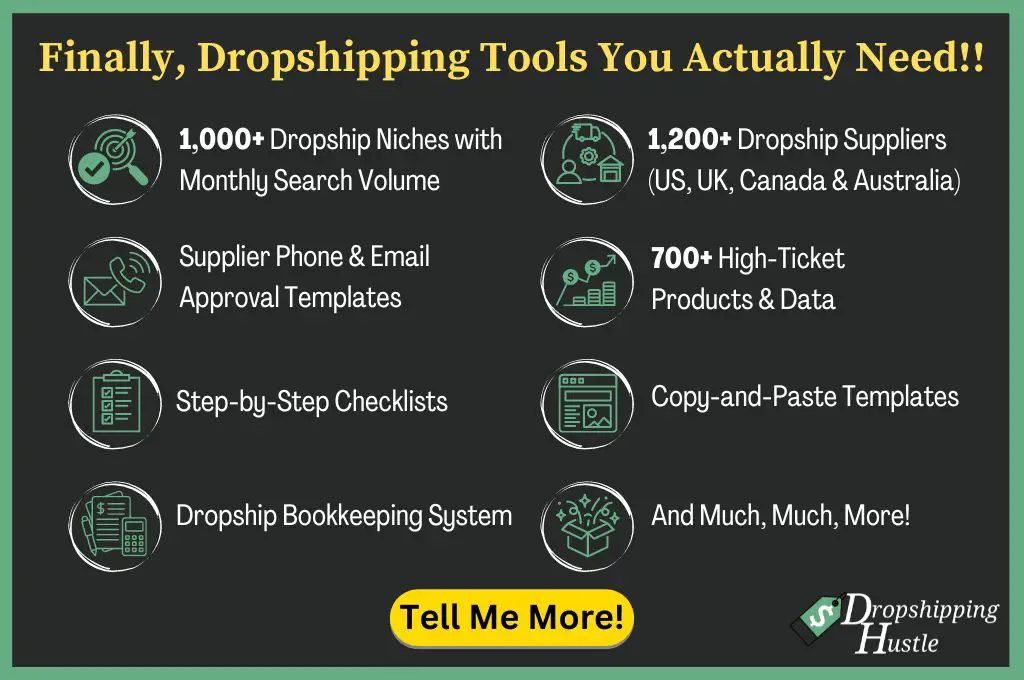
Does Shopify Have the Best Themes for Dropshipping?
When it comes to themes, Shopify has a vast selection to choose from, though only 12 of them are offered for free. Given the high failure rate with dropshipping stores, most entrepreneurs in this space tend to opt for a free theme, as it reduces their initial risk.
While I’m not a huge advocate of using Shopify’s free themes for the long-term, I do believe they can be great for short-term testing and validating the potential of your store. These free themes may be minimal on features, but I’ve found them to be clean, cohesive, and well-suited for selling most products across various niches.
The downside is that Shopify only provides 12 free themes to choose from. If none of these align with your desired vision, you’ll be forced to invest in a paid theme.
Speaking of paid Shopify themes, options like Prestige and Impulse are professional and high-end, making them ideal for increasing the perceived value of your products and building trust with customers.
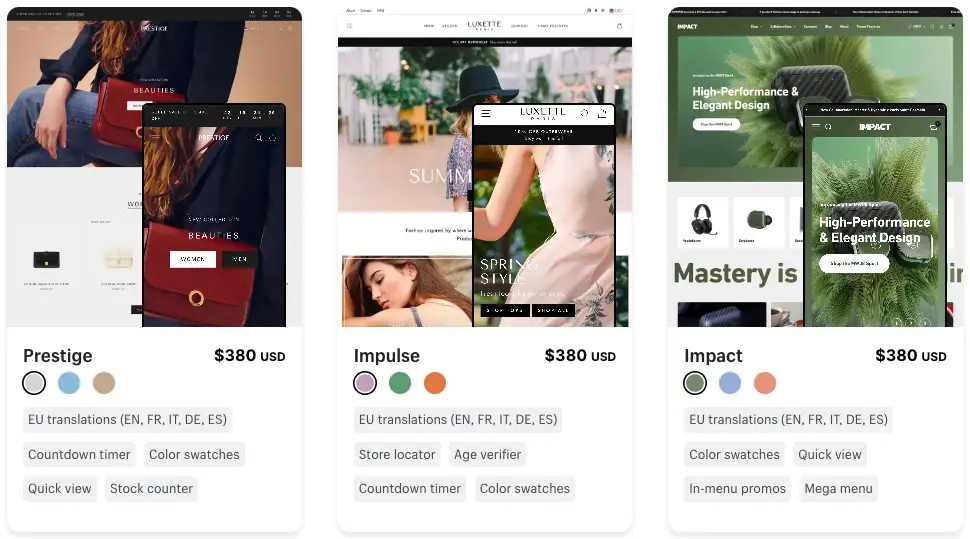
If a large selection of free themes and templates is important for you, Shopify may not be your best choice.
Wix has hundreds of free templates to choose from that would suit just about any niche. Not only do you get a huge selection, they’re modern and professional.
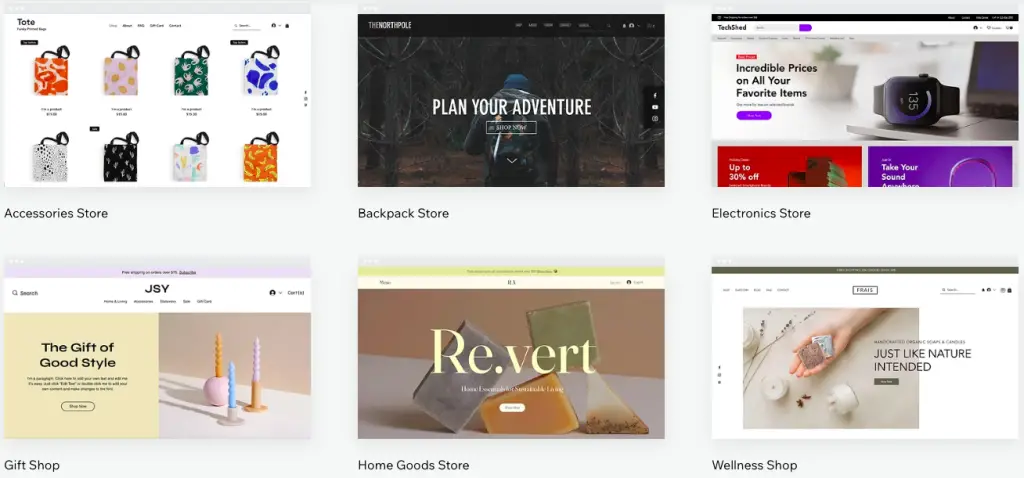
However, if your top priority is finding truly unique and luxurious themes, I believe Squarespace holds the edge in this department. They offer hundreds of highly customizable, mobile-responsive, high-end themes.
Overall, while Shopify themes are generally sleek and modern, if you’re aiming to build a dropshipping store that can stand out from the crowd, you’ll likely need to upgrade to a paid theme at some point.

Best eCommerce Platform for Dropshipping Apps
This is a key reason why Shopify has come to dominate the dropshipping industry – its platform is packed with hundreds of dropshipping-focused apps within the Shopify App Store.
Third-party tools, suppliers, and services recognize that they need to integrate with Shopify in order to succeed and remain relevant. If you’re looking for unique features or lesser-known suppliers and print-on-demand services, you’re far more likely to find them available on the Shopify platform compared to other e-commerce options.
For example, when I searched for dropshipping-related apps in the Shopify App Store, it returned a staggering 537 results. In contrast, when I looked for similar apps on BigCommerce, one of Shopify’s biggest competitors, the search only yielded 16 dropshipping-focused applications.
This breadth of integration and app availability is a major factor that has solidified Shopify’s position as the go-to platform for dropshippers. The depth of dropshipping-specific tools and services accessible through their app ecosystem is unmatched by rival platforms.
| eCommerce Platform | Number of Dropshipping Apps |
|---|---|
| Shopify | 537 |
| Squarespace | 14 |
| WooCommerce | 17 |
| BigCommerce | 16 |
| Wix | 25 |
| Ecwid | 12 |
If you’re planning to integrate your dropshipping store with third-party apps for suppliers, shipping services, dropshipping fulfillment, Print-on-Demand and much more, Shopify will be the easy and necessary choice.
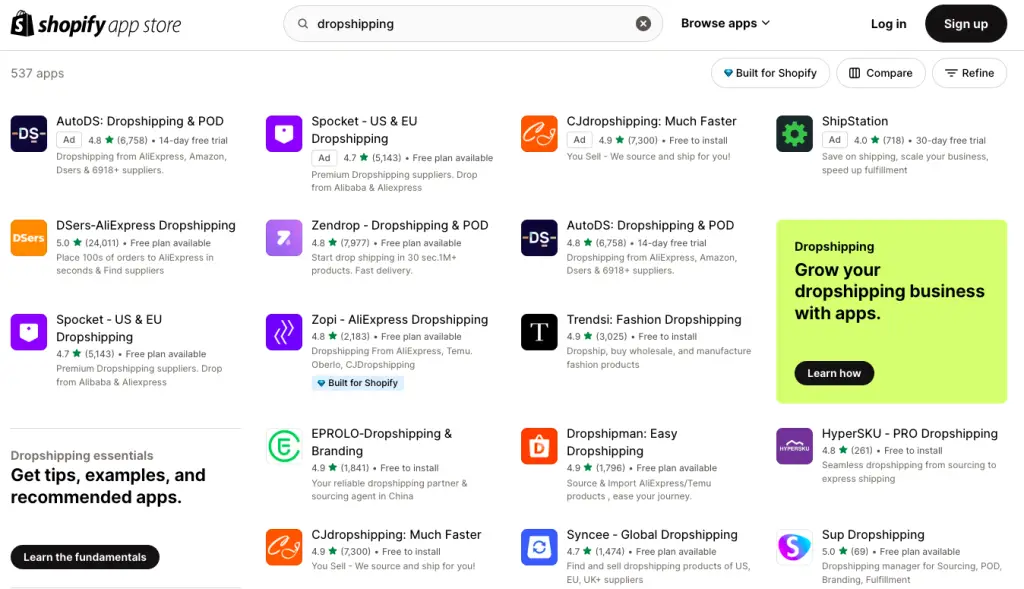
Is Shopify the Easiest to Use for Dropshipping?
If you’re not a particularly tech-savvy individual (like myself) and your goal is to build a dropshipping store without having to waste time trying to understand how everything works, this is an important consideration.
Firstly, if you want to avoid more complicated setups for your dropshipping store, I would steer clear of WooCommerce and BigCommerce. In my opinion, BigCommerce has a steeper learning curve, while WooCommerce can be quite complicated if you’re inexperienced with WordPress.
Personally, I’ve found Shopify, Squarespace, Hostinger, and Wix to be the easiest platforms to use for building a professional dropshipping store. Each of these options utilizes a drag-and-drop interface, making it simple to build and customize a store to your liking.
That said, Shopify and Wix are slightly less customizable compared to Squarespace and Hostinger. The former two platforms tend to be more section-based, with each section following a template structure with limited customization options.
In contrast, Squarespace and Hostinger offer users more freedom to design their dropshipping store exactly as they envision it. However, I wouldn’t let this be the deciding factor, as each platform excels in this department and has its own strengths.
Which is the Best Value Platform for Dropshipping?
When it comes to overall value for starting a dropshipping business, you have several viable options. While the WooCommerce plugin is free, you’ll still need to factor in the cost of a domain name, hosting, and any additional plugins you require.
Hostinger is another option worth considering if you want to start a dropshipping business with as little upfront investment as possible. I was pleasantly surprised by how capable Hostinger is, given its affordable pricing.
However, it’s important to note that the $2.99/month plan is only available on a 48-month plan, and for a single month, the cost increases to $11.99/month.
Squarespace is also a great value proposition for those seeking a premium e-commerce platform at an affordable price point. Given the beautiful, free themes and the ability to build a unique, professional store in just a few hours, this is a tempting option to consider.
As for Shopify dropshipping, the base plan starts at $29/month, with any additional apps or themes incurring extra costs.
While this may be a higher monthly investment, in my opinion, it’s the best option if it fits your budget. Considering the abundance of dropshipping-focused features on the platform, the extra monthly cost can often be easily offset as you start scaling your dropshipping business.
| Platform | Basic Plan Starting Price | Standard/Mid-tier Plan | Advanced/High-tier Plan |
|---|---|---|---|
| Shopify | $29/month | $79/month | $299/month |
| Wix | $23/month | $27/month | $49/month |
| WooCommerce | Free* | N/A | N/A |
| Squarespace | $18/month** | $26/month | $40/month |
| Magento | Free (Open Source) | Varies*** | Varies*** |
| BigCommerce | $29.95/month | $79.95/month | $299.95/month |
| Hostinger | $2.99/month | $3.99/month | N/A |
Which is the Best Platform for Marketing Your Dropshipping Store?
When it comes to marketing features, I’ve always found Shopify to have everything I needed. It provides a built-in blog section, a wide array of SEO tools, social media integrations, and much more.
However, I will say that Wix does rival Shopify in terms of marketing capabilities, offering several marketing automation tools, booking functionalities, lead capture forms, and more. The downside with Wix is that many of the best marketing features are only available in their higher-tier plans, which may not be a necessary expense for new dropshipping businesses.
While all the platforms have similar marketing features, I’ve found that Shopify has slightly more options and capabilities compared to the alternatives.
This is particularly evident when it comes to SEO. Shopify has all the core SEO functions that most dropshippers will need, and if you require more advanced SEO features, they have a wide selection of apps that can help make ranking in Google a little easier.
That said, the disparity between e-commerce platforms isn’t massive when it comes to marketing features. While Shopify does have the edge in this department, I wouldn’t necessarily let this be the deciding factor in your final platform selection.
| Shopify Marketing Features | Marketing Features Description & Utilization for Dropshipping Stores |
|---|---|
| Email Marketing | Create and send emails directly from Shopify. Use to engage customers with personalized offers and updates. |
| Facebook Ads | Integrate with Facebook to manage ads. Utilize to target specific demographics and increase sales through social media. |
| Google Smart Shopping | Automatically optimize your Google Ads. Use to place products in front of potential buyers searching online. |
| SEO Tools | Improve your store’s visibility on search engines. Utilize to drive organic traffic and reduce customer acquisition costs. |
| Social Media Integration | Link your store with various social media platforms. Use to promote products and engage with customers where they spend time online. |
| Shopify Blog | Publish content related to your niche. Utilize to establish authority, improve SEO, and attract organic traffic. |
| Discount Codes and Coupons | Generate discount codes. Use to incentivize purchases, reward loyal customers, and drive sales during promotional periods. |
| Abandoned Cart Recovery | Send automated emails to customers who left without purchasing. Utilize to recover lost sales and understand why carts are abandoned. |
| Product Reviews | Collect and display customer reviews. Use to build trust, provide social proof, and influence buying decisions. |
| Gift Cards | Offer gift cards for your store. Utilize to increase customer loyalty, attract new customers, and boost sales during holiday seasons. |
| Analytics and Reports | Track the effectiveness of marketing campaigns. Use this data to refine strategies and allocate resources more effectively. |
| Affiliate Programs | Set up an affiliate program. Utilize to expand your marketing reach with minimal upfront costs through partnerships with influencers and affiliates. |
What Makes Shopify the Best for Dropshipping?
Maybe I’m a bit biased because I’ve used Shopify more extensively than the other platforms and have built several successful dropshipping stores on their platform. However, while I don’t believe Shopify necessarily stands out from the competition in terms of pricing, theme quality, ease of use, or support, I do think it excels where it matters most for a dropshipping business.
The abundance of apps and third-party integrations that Shopify offers to dropshippers is simply unmatched. As a dropshipper, you don’t want to start making sales on your store only to realize you need a 3PL or a specific supplier down the line, and your e-commerce platform doesn’t integrate with the service you require.
This alone is enough to sway me towards Shopify. I don’t want to be limited in the functionality or resources available to my dropshipping stores.
Another key factor is that Shopify is set up and powerful enough to scale your dropshipping business with ease. The platform is designed with tools and sales features that enable you to manage a large product inventory and scale your advertising efforts efficiently.
Platforms like Hostinger or Wix may be better suited for smaller dropshipping stores, but as your business grows, you’d likely need to transition to Shopify in the long run.
An important consideration is also the abundance of backend analytics that Shopify provides, especially when integrating with Google Analytics. I found these analytics invaluable for monitoring store statistics, customer behavior, and optimizing my operations accordingly.
| Analytics | Analytics Description and Utilization for Dropshipping Stores |
|---|---|
| Analytics page | Provides an overview of your store’s performance. Utilize it to gauge overall business health and to make quick decisions. |
| Finances reports | Tracks financial transactions including sales, returns, taxes, and payments. Use to manage your store’s financial health. |
| Fraud reports | Identifies potentially fraudulent orders. Utilize to mitigate risk and prevent financial loss by spotting suspicious activity. |
| Order reports | Details on orders made over time. Use to analyze sales trends and customer demand. |
| Live View | Real-time visualization of store activity. Utilize for instant insights into customer behavior and sales performance. |
| Acquisition reports | Tracks how customers find your store. Use to refine marketing strategies and focus on the most effective channels. |
| Inventory reports | Provides insights on stock levels and sell-through rates. Utilize for efficient inventory management. |
| Behavior reports | Analyzes how customers interact with your store. Use to optimize site layout and product placement for better engagement. |
| Marketing reports | Measures the effectiveness of marketing campaigns. Utilize to adjust strategies and allocate budget wisely. |
| Sales reports | Comprehensive analysis of sales data. Use to identify best-selling products and peak sales periods. |
| Retail sales reports | For businesses with brick-and-mortar locations, tracks in-person sales. Use to compare online and offline sales performance. |
| Profit reports | Breaks down revenue vs. costs to reveal true profitability. Utilize for detailed financial planning and analysis. |
| Customer reports | Segments customer data to reveal patterns in behavior. Use to tailor marketing efforts and improve customer retention. |
| Customs reports | Allows creation of tailored reports specific to your business needs. Utilize for deep dives into unique aspects of your store. |
With Dropshipping being so competitive and typically thin profit margins, optimizing allows you to split-test many variables and improve your conversion rate.
For my own dropshipping stores, I would split test multiple offers, promotions, advertising headlines or product page layouts. I would then monitor results using analytics and behaviour reports and optimize based on the results.
Don’t underestimate how powerful Shopify’s backend analytics can be for your dropshipping store.
Conclusion
If I was starting a dropshipping business today, Shopify would be my platform of choice. It provides all the necessary tools, apps, and features, and has some of the best support in the industry.
Another factor to consider, especially for beginners with limited technical skills, is the abundance of up-to-date tutorials on YouTube for Shopify. The vast majority of dropshipping content creators on YouTube recommend Shopify, and their guidance and courses will primarily be based on the platform.
However, there are two instances where I would not recommend Shopify. The first is if you’re working with a very tight budget. For many, the $29/month base plan can be a significant cost.
In this situation, Hostinger could be a good alternative for brand new dropshipping stores, allowing you to design a modern, high-end store for minimal upfront investment. Just be aware that you’ll be more limited in terms of features, especially as you scale your business.
The other scenario where you may want to consider a Shopify alternative is if e-commerce is not the central focus of your store. For example, if you want to create a blog and have a dropshipping business as part of your overall offering, there may be better platforms than Shopify.
In this case, using WordPress with the WooCommerce plugin for your dropshipping operations could be a superior choice.




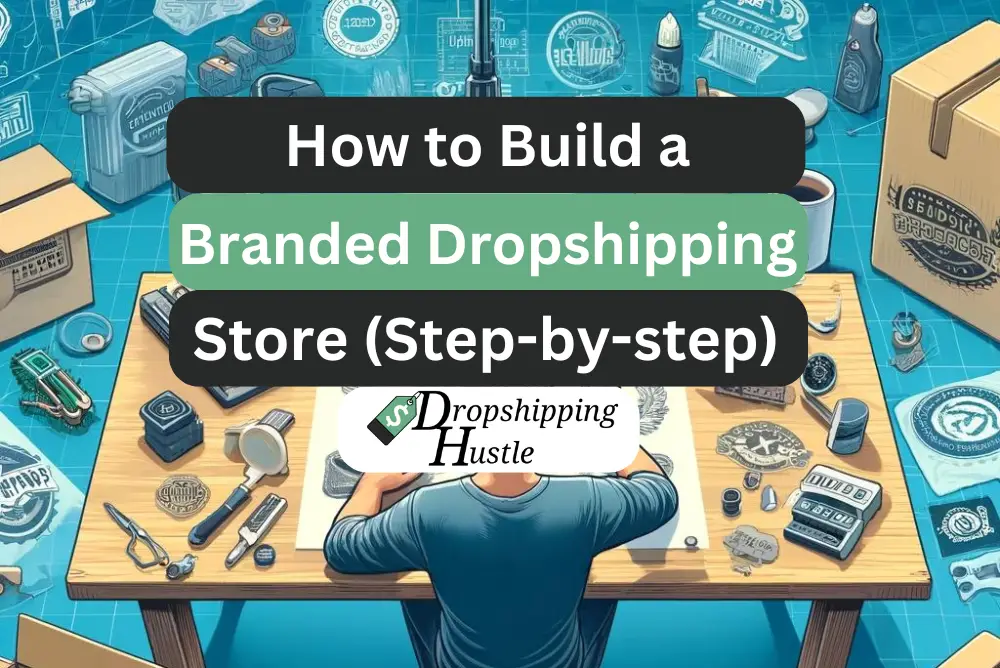

Leave a Reply